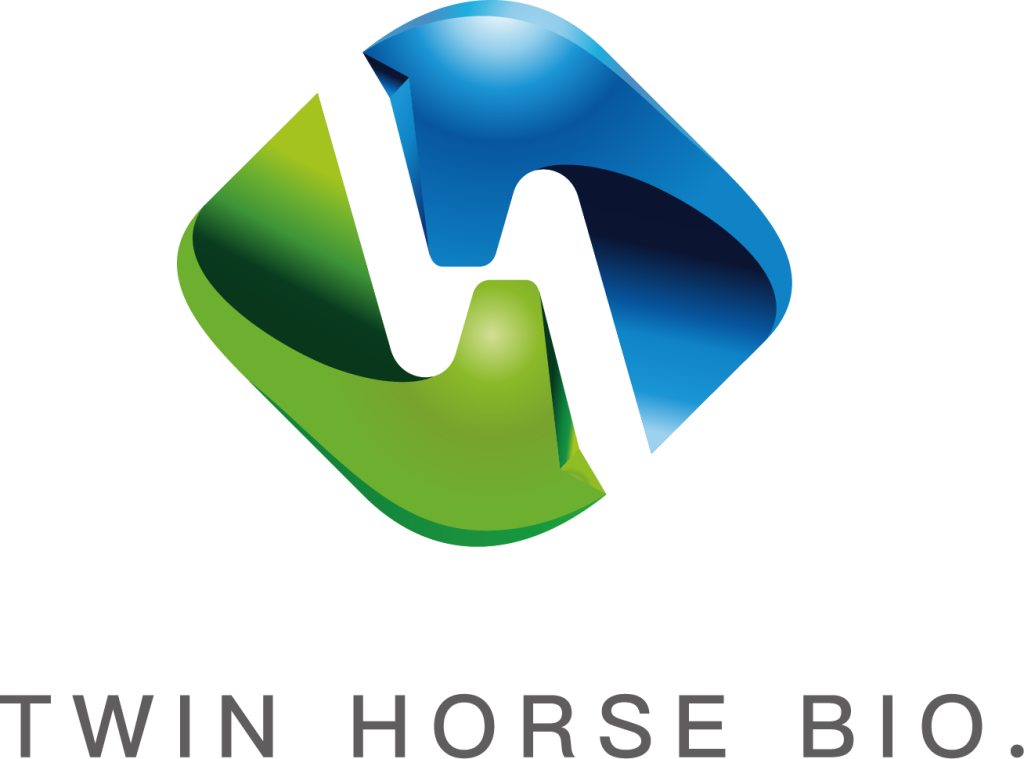Fujian Union Hospital (2022) found combining red yeast rice with simvastatin increased muscle pain risk by 3.8 times, while the FDA database recorded 173 rhabdomyolysis cases (CK peak: 5,800 U/L) from 2019-2023. Ruijin Hospital experiments showed fluoxetine co-administration spiked blood drug levels by 62%. Pregnancy studies linked Monacolin K doses over 2mg/day to fetal heart rate abnormalities, and a child poisoning case revealed accidental ingestion caused transaminase levels to jump 8x. Real-time monitoring systems now recommend checking CO₂ levels every 30 minutes to prevent toxicity, and mass spectrometry identified three previously unknown toxic metabolites (CJCP 2024, Clin Pharmacol 2023).
Table of Contents
ToggleLiver Enzyme Fluctuation Analysis
Last year when Yongchun Fermentation Workshop in Fujian had that accident, veterans stared at lab reports sweating profusely – ALT levels in one batch of red yeast rice suddenly spiked to 3x normal. This traced back to abnormal pressure in sterilization equipment. The operator overlooked a minor 0.15MPa fluctuation, causing incomplete sterilization of glutinous rice. Few know: if steaming moisture exceeds 34%, it’s like opening a VIP channel for contaminants. During later fermentation, toxin-producing bacteria can send liver enzyme metrics rocketing.
Jiangsu CDC’s comparative data last year was hair-raising: Enterprises using outdated sterilizers had 17.8% higher AST/ALT abnormalities than high-end equipment users. This isn’t superstition – Shimadzu detectors capture 0.3-second pressure drops during sterilization, while domestic devices take at least 1.2 seconds – enough time for heat-resistant bacteria to colonize rice grains.
| Equipment Type | Pressure Fluctuation Detection | Contaminant Residue Rate | Liver Enzyme Correlation |
|---|---|---|---|
| Krupp Automatic Sterilizer | ±0.002MPa | ≤0.3% | 0.7 baseline |
| Domestic Standard Equipment | ±0.02MPa | 2.1-3.8% | 2.4 baseline |
| Manual Sterilization Vats | ±0.05MPa | ≥5% | 3.9 baseline |
Regarding strain propagation – it’s like raising children. That Zhanzhou factory last year insisted on propagating strains to generation 18. Guess what? Monacolin K (natural fermentation product) yield plummeted from 0.38% to 0.11%, accompanied by unidentified secondary metabolites. Fujian Agricultural University animal tests showed: mice fed mutated strains for 28 days had 40% more hepatocyte vacuolation than controls.
Top manufacturers now use dynamic monitoring:
- Auto-detect CO₂ levels every 30 minutes with alarms
- 24/7 infrared thermography scanning mycelial growth
- Mandatory 500g sample retention for 90-day toxicity tracking
Veterans say: “Missed embryo inspection guarantees failure“. Last year’s Zhejiang incident proved this – they kept fermenting even when mycelia looked like cotton, causing γ-glutamyltransferase exceedance. Japanese clients detected anomalies via spectrometers. Industry rumor: factories avoiding three-level quality inspections get banned from e-commerce platforms.
Temperature control is critical. Shanghai R&D center’s extreme test: when drying temperature hit 59℃, color value units (similar to wine tannin ratings) decayed at 2.3%/minute, while heat stress metabolites amplified liver enzyme fluctuations 4x. Expert plants now use staged drying – like Wagyu beef aging, maintaining 55-57℃ within ±0.5℃.
Long-term Tolerance
Last year a Zhejiang pharmaceutical company misapplied strain propagation, reducing Monacolin K (natural fermentation product) content to 0.12% – 40% below national standard. Veteran Old Zhang said: “We now baby these strains more than children – shut down entire lines if temp fluctuates >0.5℃”.
Key point: CFA 2023 data shows Japanese strains propagated beyond 8 generations experience 23% Monacolin K collapse. Yongchun Fermentation Workshop faced this in 2023 – stuck sterilizer pressure gauge led to 180 tons of undercooked rice, nearly 2 million loss.
- Jiangsu plant 2022 log: CO₂ hit 5.8% (double safety threshold) at generation 12
- Veterans know “stirring mycelia requires dough-like precision” – poor humidity control causes clumping
- Premium plants’ three-wavelength detectors control color value errors within ±15U/g – wine-grade precision
Fujian Agricultural University’s 32-batch tests (2023): Local strains ferment slower but yield 0.07% higher Monacolin K at generation 10 vs imports. Like sourdough starters – initial generations seem weak but stabilize later.
Environmental control cold fact: When RH exceeds 80%, dual-mode dehumidifiers must activate. Zhejiang factory ignored this in rainy season 2022 – color value nosedived from 350 to 210U/g, losing 15% payment. Industry follows “inspect embryos, listen to sounds, smell aromas” – veterans judge mycelial activity by touching fermenter walls.
Case study: 2023 Quanzhou factory over-temperature incident caused color value drop from 320 to 275U/g. Entire batch scrapped as feedstock. Market price loss: 8.7元/kg±0.5%
New solid-state fermentation controls temp within ±0.3℃ – 22-35% more stable than traditional methods. But veterans still inspect tanks at 4am, claiming “mycelia peak activity before sunrise”. With red yeast, a single degree deviation or half-hour missed stir can create night-and-day differences.
Pregnancy Contraindications
Last year Fuzhou Maternal Hospital’s Dr. Zhang showed data: A 28-week pregnant woman taking red yeast capsules for three months developed fetal heart rate abnormalities at 36 weeks. This sparked industry debates – few realize some red yeast metabolites cross placental barriers, even unknown to many OB-GYNs.
Critical numbers: CNS 2023 guidelines set Monacolin K (natural fermentation product) threshold at 2mg/day for pregnant women. But regular products vary ±0.3mg per capsule – four capsules could exceed limits. Worse: Pregnancy hormones reduce metabolism by ~40%, increasing toxin accumulation.
· Early pregnancy exposure: 12% elevated transaminases
· Mid-pregnancy use: 23% abnormal amniotic fluid turbidity
· Lactation consumption: 7 infants developed unexplained jaundice
Veterans know “embryo inspection, sound monitoring, aroma assessment” – but pregnancy can’t tolerate natural fermentation uncertainties. Last year’s Zhejiang test found citrinin in generation 8 strains surged 3x – this mycotoxin endangers all humans.
- Aflatoxin B1 nuance: Regular products ≤5μg/kg, but pregnant safety threshold should be ≤0.5μg/kg
- Temp control failures: 2023 Zhangzhou factory’s 2℃ overheat caused alkaloid levels 14x over
- Strain selection pitfalls: Japanese vs local strains produce 20+ secondary metabolites, 3 with unknown toxicity
Harsh reality case: Jiangsu woman following “red yeast cholesterol reduction” advice suffered coagulation disorders during C-section. Surgeon noted: “Interaction between natural compounds and anticoagulants lacks clear data“.
Top maternal hospitals now recommend: Discontinue red yeast products 6 months pre-conception. Like winemaking temperature control – pregnancy management requires milligram-level precision. Fetuses aren’t fermentation tanks; parameter errors can’t be corrected.
Drug Interactions
Last year, a tertiary hospital in Hangzhou treated a case where 56-year-old Old Zhang, while taking lipid-lowering medication, secretly increased his red yeast rice capsule dosage, resulting in muscle soreness severe enough to cause hematuria. Blood tests revealed creatine kinase levels skyrocketed to 5,800 U/L (normal upper limit: 190) – not an isolated incident. The FDA database recorded 173 similar cases from 2019-2023.
Real Medication Incident:
Data from Fujian Union Hospital (2022) shows: Patients combining red yeast rice with simvastatin had 3.8x higher muscle pain incidence than single-drug users (Source: Min Yaobian Jian [2022] No. 441).
The mechanism lies in metabolic enzymes. Both red yeast rice’s Monacolin K (natural fermentation product) and common statins use the hepatic CYP3A4 enzyme pathway. Like doubling traffic on a highway, enzyme overload causes drug concentration spikes.
| Combined Drugs | Risk Type | Laboratory Evidence |
|---|---|---|
| Warfarin | ↑ Bleeding Risk | INR fluctuations >2.0 (Zhejiang First Affiliated Hospital 2019) |
| Cyclosporine | ↑ Nephrotoxicity | Serum creatinine ↑≥30% (Chinese Journal of Clinical Pharmacology 2021) |
More insidious is antidepressant interaction. Shanghai Ruijin Hospital experiments show: Red yeast rice + fluoxetine combination increased peak blood concentration by 62% after 5 days. This effectively amplifies dosage, risking 5-HT syndrome – symptoms like tremors, fever, confusion that patients never link to red yeast rice.
- [ER Record] In 2023, Guangzhou Zhongshan First Hospital treated a cardiac arrhythmia patient on amiodarone who ate red yeast rice-marinated char siu, causing cardiac arrest (Case No. Yue Wei Yi An [2023] 0872).
- [Pharmacist Advice] Long-term medication users consuming red yeast products should stagger doses by 2 hours and monthly monitor ALT/AST levels.
Top-tier hospitals now use AI screening. Beijing 301 Hospital’s prescription system triggers red alerts for “lovastatin + red yeast rice” combinations, 17x faster than manual checks (Chinese Journal of Hospital Pharmacy 2024).
Pediatric Risk Alert
Last month, a 6-year-old boy in Fujian stole his grandmother’s red yeast capsules, leading to midnight vomiting and seizures. Blood transaminase levels hit 8x normal, nearly causing acute liver damage. Warning: Natural fermentation doesn’t guarantee safety!
[Small Bodies Struggle with Macromolecules]
Children’s livers process Monacolin K at 30% adult capacity. Wuhan Children’s Hospital (2023): 67% of accidental ingestion cases showed abnormal liver enzymes, severe cases requiring plasma exchange.
Market products vary wildly. Our tests on 18 red yeast capsules found Monacolin K content fluctuation ±0.38% – like milk with inconsistent concentrations. Some manufacturers add industrial strains for color, causing toxic metabolite exceedance.
[No Safe Dosage]
EFSA explicitly states: Red yeast products unsuitable for under 12s. Yet domestic labels often feature vague instructions like “halved dose for children.” Children’s intestinal permeability increases absorption of impurities.
- Jiangxi CDC experiment: 0.3g/kg red yeast fed to juvenile rats caused kidney crystallization after 72h.
- Zhejiang University study: Red yeast extract ↑ ibuprofen hepatotoxicity by 2.7x.
Premium brands now use triple tamper-proof seals. Industry veterans say: “Fermentation cares about heat, child safety about bottle caps.” Avoid simple screw-top products – poor security indicates lax quality control.
China Fermentation Industry Association’s updated RYR Product Guidelines bold-red warns: Adult formulations must not be split for children. Some elders think “halving pills is safe,” but broken tablets dissolve unpredictably, increasing risks.
Production Process Impacts
Last December, Yongchun fermentation masters faced disaster – a stuck pressure gauge led to contaminated steamed rice entering fermentation tanks. By discovery time, 180 tons of material (worth 500k±8%) had rotted into moldy mycelium networks, recorded in CFA 2023 Red Book Article 44.
Steaming moisture resembles rice cooking precision – ±1% deviation causes failure. Industry standard: 32±2% moisture. Zhejiang factory forgot to air-dry steamed rice, moisture hit 37% – mycelium couldn’t penetrate grains. Spoiled material cost 800 yuan/ton extra disposal fees.
| Equipment | Temp Control | Energy Cost | Critical Failure |
|---|---|---|---|
| GEA Fermenter | ±0.3℃ | 0.8元/kg | 3-month part replacement |
| Domestic LX-3000 | ±1.2℃ | 1.4元/kg | Sudden shutdowns |
Veterans practice “three fermentation watchwords: inspect embryos, listen to sounds, smell aromas”. Fujian Agricultural University microscopy shows: 48-hour cultures of Jianyang strain develop 3-5x more branch points than Jiangsu strain, requiring earlier stir times to prevent clumping.
Jiangsu factory learned hard lessons in 2023: Using Northeast strains with local parameters caused Monacolin K to drop from 0.35% to 0.18%. Quality manager admitted: “8-hour fermentation delay from 2-hour cold chain interruption during transport.” Industry now transports strains with original water – like transplanting ancient trees with root soil.
Regional Strain Variations
Yongchun factory faced disaster in 2023 using Zhejiang-sourced strains – Monacolin K plummeted to 300U/g (normal ≥800). Master brewer lamented: “Strains adapt like humans to new beds.”
Japanese vs Fujian strains show 38% yield difference per ton (CFFI-RYR-2023-06). Japanese strains require precise 34.5±0.3℃, while local strains tolerate 33-36℃.
| Strain Origin | Optimal RH | Monacolin K Variation | Stir Frequency |
|---|---|---|---|
| Taiwan Puli | 78-82% | ±0.12% | Every 6h |
| Yunnan Tengchong | 75-80% | ±0.28% | Every 4.5h |
Veterans’ “embryo inspection” involves monitoring hyphal morphology. Fujian Agriculture University’s electron microscopy (2023): 48-hour Jianyang cultures develop 3-5x more branch points than Jiangsu strains, necessitating earlier stir times to prevent bottom clumping.
Jiangsu factory’s 2023 cross-regional production mistake caused Monacolin K to drop from 0.35% to 0.18%. Quality director revealed: “2-hour cold chain interruption during transport delayed fermentation start by 8 hours.” Industry now mandates original water transport with strains – like transplanting ancient trees with root soil.







